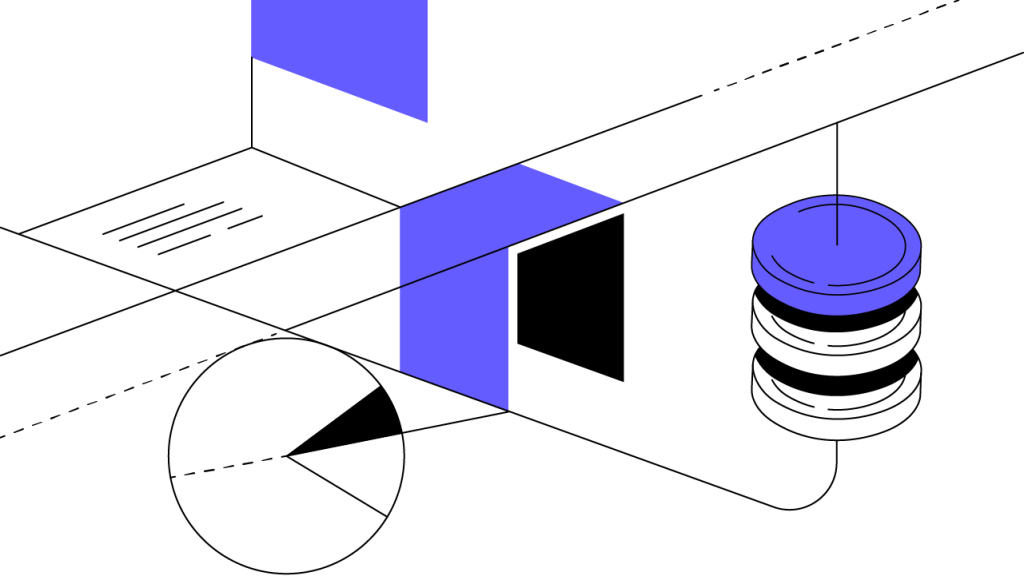Contents
NEO: Building the Smart Economy
The NEO network’s unique digital-identity solution, combined with its support of both digital assets and smart contracts, fuel the platform’s vision for a comprehensive smart economy.
Updated March 15, 2021 • 6 min read

Summary
NEO is often considered to be the Chinese equivalent of Ethereum, and was built with a focus on driving cryptocurrency adoption within the growing Chinese economy. It was founded in 2014 by the same company that launched Ontology, and was named AntShares until 2017 when it became NEO. NEO is a regulated, open source platform that combines a number of key features to provide a unique and sophisticated platform. The project aims to build a smart economy that is recognized and overseen by regulatory bodies, to ensure all stakeholders are protected by law. The NEO blockchain uses a sophisticated version of the Proof-of-Stake (PoS) consensus mechanism, and incorporates advantages found in traditional economic structures to provide protection and confidence for existing stakeholders. NEO’s acceptance within China’s tightly regulated market highlights its huge potential for growth.
Background: the Chinese Market
The Chinese market presents a number of unique challenges for businesses, including language barriers and rigorous regulatory requirements that often differ from other major markets. For these reasons, it’s relatively uncommon for Western companies to gain significant traction in China, and relatively common for a specific type of services within China to be dominated by Chinese-owned businesses. For example, the country’s consumers rely on Alibaba instead of Amazon, Baidu instead of Google, and Didi Chuxing instead of Uber. Blockchain is no exception to this trend, with NEO taking over many of the functions that Ethereum is most known for in other parts of the world.
NEO was founded in 2014 by Da Hongfei and Erik Zhang — the founders of OnChain, NEO’s parent company. Along with OnChain, the non-profit NEO Council (which later became the NEO Foundation) is another driving force behind the platform’s development and adoption. OnChain has also been an instrumental force behind other projects, including Ontology (ONT).
How the NEO Blockchain Aims to Build a Smart Economy
NEO’s unique digital identity solution, combined with its support for digital assets and smart contracts, fuel the platform’s vision for a comprehensive smart economy. The project aims to build its own economic system through the establishment of a comprehensive and decentralized digital identity for every asset and node on the network. An active participant in the network undergoes a thorough identification process linking them to a traceable, real-world identity that is compliant with regulatory requirements such as Know Your Customer (KYC) and Anti-Money Laundering (AML) regulations. The network creates this digital identity through a combination of facial recognition, biometric data, voice recognition, and other multi-level verification mechanisms. This creates increased accountability that ultimately makes the entire system more secure.
Leveraging NEO’s identity system, network participants can log and exchange a wide variety of assets in the platform. For example, a user can log a physical asset (such as gold) on the platform, and generate a unique digital representation of that asset, which is registered to the user’s digital identity, and is protected by Chinese law.
Users are able to buy and sell different products or services with the benefit of transparent and immutable transaction records, with reduced fear of interference from bad actors. In essence, NEO increases the security and confidence consumers have in digital marketplaces, as physical assets or services exchanged on the platform can all be assigned a legally enforceable digital identity.
The NEO blockchain is further able to support a smart economy through the use of smart contracts. Platform users’ registered and legally protected digital assets are traded using NEOContract, NEO’s powerful smart contract protocol. NEOContract features a number of key advantages, including the high speeds of just-in-time (JIT) compilation and — perhaps most notably — the flexibility of using nearly any programming language, including mainstream enterprise-level languages such as Java, Python, C#, and JavaScript. Because NEO supports major programming languages — in contrast to other popular smart contract platforms like Ethereum, which requires developers to code in Solidity (its native programming language) — developers who aren’t familiar with Solidity or other niche languages are more easily able to create smart contracts within the NEO network. This functionality ultimately helps pave the way for faster and easier developer and enterprise onboarding.
Using smart contracts, NEO also employs what’s known as the NEO Enhancement Protocol (NEP). Using NEP, NEO generates its own proprietary forms of both fungible and non-fungible tokens (NFT’s). NEO’s fungible token is NEP-5, which functions similarly to Ethereum’s ERC-20 token, while its non-fungible token is NEP-11, and functions similarly to Ethereum’s ERC-721 token. Notable examples of NEP-5 token usage include Ontology and Switcheo, and the O3 Foundry uses NEP-11 to offer a Decentralized Application Programming Interface (dAPI) for NFT creation.
Finally, as of October 2020, NEO announced a major upgrade, which is slated to include file storage rental functionalities similar to those of STORJ or Filecoin.
NEO Coins vs. GAS Coins
The NEO network has two cryptocurrencies. Each serves a different but essential function, and they act in unison to increase the stability of the network. New NEO coins were pre-mined at the inception of the blockchain with a total of 100 million created. No more NEO coins will be issued. Half of these coins were locked into a smart contract that releases a maximum of 15 million coins every year for use in funding project developments. New coins are used as the primary currency for transactions on the platform, and are also used to grant voting rights. Through voting, users can manage the network, determine how it develops, and choose parties for different positions, such as bookkeeping.
As both a safety mechanism and economic incentive, there is a charge to conduct a transaction on the NEO network. Just like with most other cryptocurrencies, validating nodes set this cost, which is commonly referred to as the “gas price.” In the case of Ethereum, gas prices are paid in the form of tiny denominations of ether, called gwei. In contrast, gas fees in the NEO network are not paid in NEO, but rather in a separate cryptocurrency called GAS. The network’s GAS coin is generated with the addition of new blocks, which are confirmed on the NEO blockchain about every 15 to 20 seconds.
Blocks in the NEO network are validated through a Proof-of-Stake (PoS) consensus mechanism by stakers of NEO coins, and these NEO stakers receive GAS as a reward for their validation services. The total number of NEO GAS issued from blocks started at one and will continue to increase until reaching a ceiling of 100 million coins, which is expected to take around two decades. The platform charges users in GAS for storing currency as well as for executing smart contracts. This helps prevent frivolous use of the network.
This unique, hybridized structure is particularly noteworthy from a cryptoeconomic perspective. Just as with ether and bitcoin, new GAS coins are minted as rewards for validators, but in contrast to ether and bitcoin, no new NEO will be minted. In other words, the NEO network’s two coins balance each other out — with GAS serving as an inflationary mechanism, and NEO working as a counter-inflationary mechanism. OnChain designed a similar system for its subsequent project, Ontology, which makes use of both ONT (Ontology coin) and ONG (Ontology gas coin) in its operations.
The Growing NEO Blockchain Ecosystem
As NEO grows, it is focused on remaining in compliance with regulatory bodies — especially in China. Doing so ensures that NEO can maintain long-term success, and receive buy-in from necessary stakeholders, including enterprise businesses. The project has already made significant regulatory progress with its digital-identity system and by legally enforcing transactions made on the platform. Individuals and companies within the NEO ecosystem must be verified before making transactions, mitigating any concerns around illegal activity. This verification requirement also extends to the distributed nodes on the NEO blockchain network.
NEO’s ecosystem is powered by NEO's Universal Lightweight Virtual Machine: NeoVM. It is highly secure and designed for scalability. NeoVM, along with the project’s native flexible smart contract system, NEOContract, helps provide the kind of sophisticated functionalities that are driving growth on the network.
For example, new NEO-driven projects are appearing in arenas such as workforce analytics, gaming, and financial services. Some notable examples are:
PolyNetwork: NEO works with PolyNetwork to foster cross-chain expansion, integrating with BTC, ETH, Cosmos, and Ontology.
NASH: Previously called NEX Exchange, this decentralized exchange by City of Zion (a major NEO contributor) seeks to combine the convenience and speed of centralized exchanges with the security of decentralized exchanges.
QLC Chain: Formerly known as Qlink, the project is focused on creating a decentralized telecommunications platform based on distributed ledger technology.
DeepBrain Chain: This decentralized neural network platform provides specialized computing power to artificial intelligence (AI) businesses.
NEO’s ability to bring on a growing number of individuals and businesses and gear up for cross-network expansion — while also maintaining regulatory compliance — positions it well for widespread adoption.
An Innovative Governance and Distribution Model
NEO is community-driven, and coin holders are the primary owners and directors of the platform as they vote on network developments. The network leverages complex algorithms to add new blocks to the chain via selected nodes called bookkeepers.
Further, there is a parallel non-profit NEO Foundation made up of NEO founders, core contributors, government representatives, and enterprise stakeholders. The foundation further includes a number of committees that address numerous areas such as technical challenges and management issues. These groups help outline the strategy for the platform and are responsible for implementing specific updates. The council is accountable to the larger community and is thus incentivized to grow and develop NEO for long-term success.
Regulators and enterprises in China consider this hybridized governance structure to be one of NEO’s key selling points. NEO’s combination of decentralized democratic voting and consensus, a semi-centralized non-profit foundation, and centralized core team, solidifies the platform’s ability to leverage the benefits of both blockchain technology and traditional organizational protocols.
Cryptopedia does not guarantee the reliability of the Site content and shall not be held liable for any errors, omissions, or inaccuracies. The opinions and views expressed in any Cryptopedia article are solely those of the author(s) and do not reflect the opinions of Gemini or its management. The information provided on the Site is for informational purposes only, and it does not constitute an endorsement of any of the products and services discussed or investment, financial, or trading advice. A qualified professional should be consulted prior to making financial decisions. Please visit our Cryptopedia Site Policy to learn more.

Is this article helpful?


